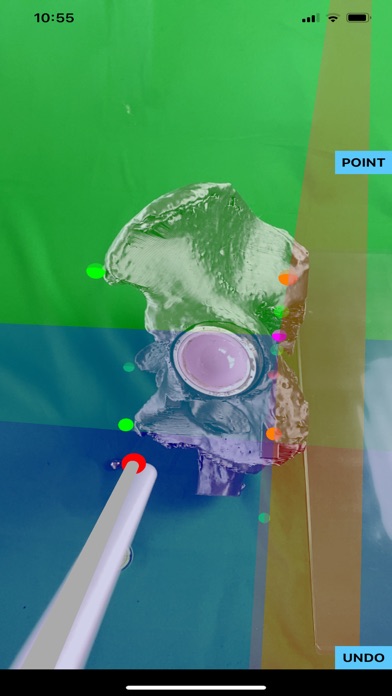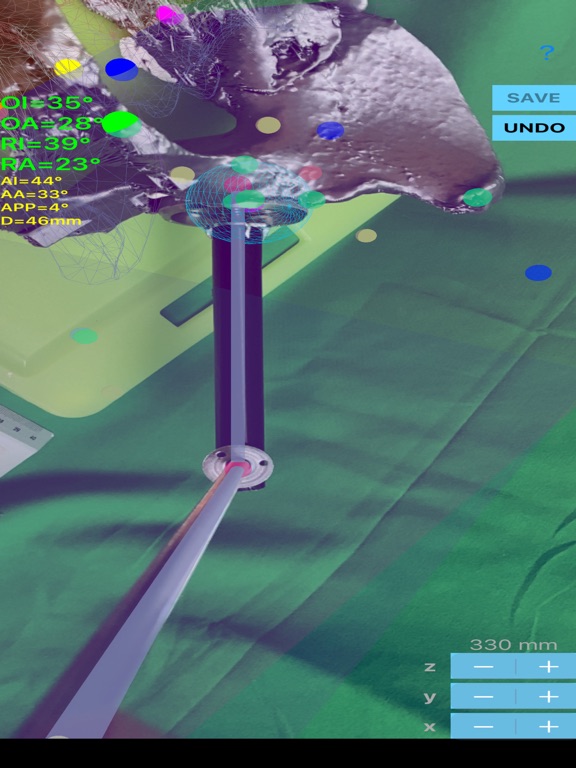Screenshots
Description - 17+
Good surgical technique and accurate implantation of the acetabular cup component improve the longevity and function of Total Hip Arthroplasty(THA). Malposition- outside safe zone increases the risk of complications namely decreased range of movements, increased rates of impingement, increased wear rates, recurrent dislocations, osteolysis, ‘squeaking’, leg-length discrepancy, and early failure rates.
Placement of the acetabular cup during surgery can be performed by using free hand technique and or by alignment support frames on the Inserter. The surgeon try to navigate by taking into account the position of the frames relatively with surgical bed plane. Acetabular cup orientation based on surgeon’s visual assessment and experience could result in an inaccurate placement. Computer-assisted navigation system is proven that they improve the precision in cup position. Apple developed and popularised (AR) Augmented Reality technology readily available for its devices. The application take advantage of Augmented reality and merges it with Computer Assisted Orthopaedic Surgery (CAOS) techniques and principles in effort to help an orthopaedic surgeon during operation without the need of expensive CAOS equipment.
The App is medical App software aimed for orthopaedic surgeons, providing a tool that allows the surgeon to expedite the procedure of cup positioning effortlessly by following below these steps
-by registering, with the tip of iPhone-Case-Probe instrument certain anatomical landmarks, to see in Augmented Reality all 3D planes with different transparent colours (sagittal-blue, coronal-red transverse-green),
a transparent sphere appears inside the real acetabulum centred over the centre of hip rotation and also in augmented reality the bony pelvis appears over the screen.
-by attaching the Case-Probe to certain clamp and attaching to the reamer or later to inserter, the surgeon can be oriented by observing in real time over the phones screen, six angles, Operative Anteversion (OA) and Inclination (OI), Radiographic Anteversion (RA) and Inclination (RI), Anatomical Anteversion (AA) and Inclination (AI) respectively .
-by observing in real time all angles, changing the direction of the reamer or inserter the surgeon can adjust the position of the cup respectively, aiming the final Implant orientation to be inside the new redefined safe zone- adjusted by patient-specific pelvic tilt-(Operative inclination (OI) 43°±12°, anteversion (OA) 31°± 8°). During surgery, as long as the measured values of OI and OA are inside the above mentioned normal range, the printed colour in screen remains green, otherwise are printed in red colour.
-During surgery, as long as the measured values of RI and RA are between normal range, the printed colour in screen remains green, otherwise are printed in red colour.
-QR-code Image attached over Passive Sensor acts as a dynamic reference base, the app updates the position of registered points in AR according to the new position of patient pelvis respectively without to reregister.
-Pelvic tilt is measured as anterior pelvic plane (APP) Angle and printed over screen. Its value is used for the calculation of anteversion and inclination of above mentioned angles and respectively adjusted.
-The acetabular axis is presented as rod in AR, perpendicular to acetabular rim circumference.The respective angles of inclination and antevesion between the acetabular axis and projected planes are also measured
-Acetabular dimension is also printed in mm allowing the surgeon to decide in advance the size of starting reamer.
Reference
1. Murphy AB and & The Safe Zone Range for Cup Anteversion Is Narrower Than for Inclination in THA William S. Clin Orthop Relat Res 2018; 476:325-335.
2. Ogawa H, et al. A Pilot Study of Augmented Reality Technology Applied to the Acetabular Cup Placement During Total Hip Arthroplasty.J Arthroplasty. (2018) Jun;33(6):1833-1837.


















